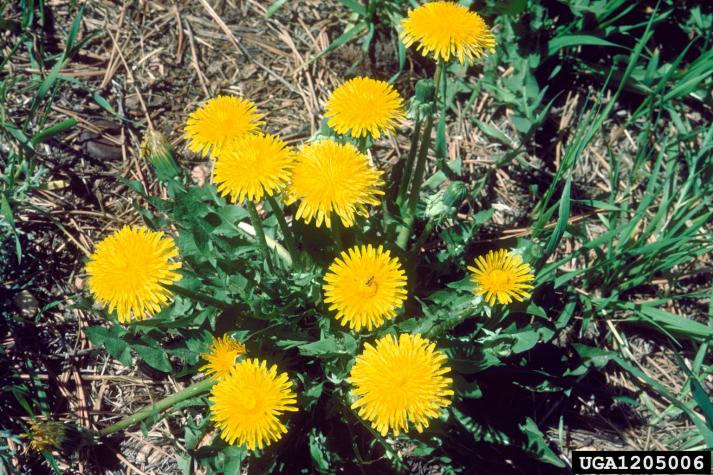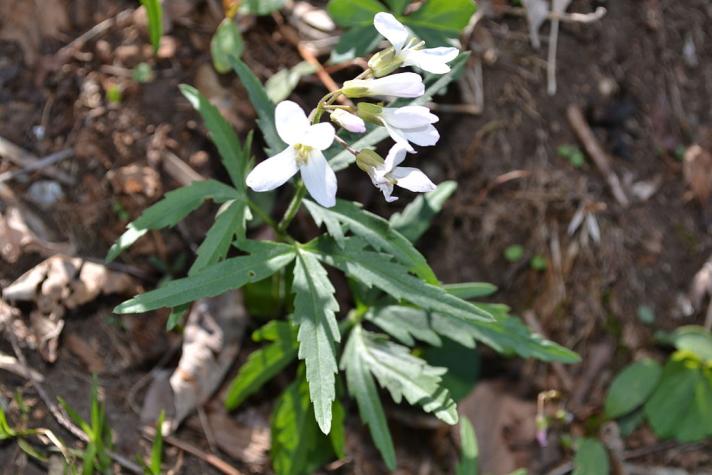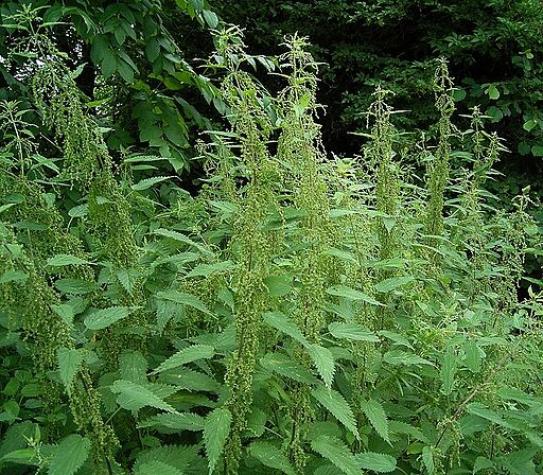COLUMBIA, Mo. – Spring greens from the woods can add variety to your diet.
Wildcrafting—the gathering of plants from their natural habitats—is a throwback to the days of our distant ancestors, says University of Missouri Extension horticulturist David Trinklein. Our ancestors’ winter diets lacked the variety of fresh produce we enjoy today. Therefore, when spring arrived, they combed the woods for wild edibles to add flavor and nutrition to their meals.
Trinklein cautions beginning wildcrafters to study plant identities before they begin. “The cardinal rule to remember when hunting wild greens is to be certain to know what you are gathering,” he says. “If in doubt about the identity of a plant, definitely pass it by.”
Trinklein recommends Edgar Denison’s “Missouri Wildflowers,” published by the Missouri Department of Conservation. Beginners also can benefit from going with seasoned wildcrafters until they learn what plants can be eaten safely, he says.
Avoid harvesting roadside plants, which may contain vehicle exhaust residue or pesticides from adjoining cropland. Wash all plants at least twice after gathering, changing the water each time. Check for insects and debris. Eat small amounts when trying a new plant to avoid possible allergic reactions.
Prepare wildcrafted greens by putting them in a saucepan with a little water and salt. Cook until tender; do not overcook. Mix bitter plants with sweeter ones. Add pan drippings, vinegar or lemon juice to taste. Drain water before serving. A common “working man’s diet” in the past included soup beans, fried potatoes, cornbread, raw onions and wild greens.
Trinklein recommends these Missouri plants for wildcrafting:
• Cutleaf toothwort. Also known as crow’s foot, this low-growing plant is found in woodlands and on wooded slopes. It bears five narrow, deeply lobed leaves that look like the toes on the foot of a crow. The leaves are edible, but cutleaf toothwort is prized for its rhizomes. Their spicy, radishlike flavor livens up salads. Some wildcrafters ferment toothwort to sweeten it; others boil it.
• Dandelion. Gardeners hate them; wildcrafters love them. Dandelions are high in vitamin A and iron. Their flavor peaks during March and April. To gather, cut off the whole crown close to the soil, pluck out the flower stem and sort out any debris.
• Lambsquarters. Also known as wild spinach, this later-producing green is rich in vitamins and minerals. Its light green, oval to lance-shaped leaves fare well throughout the summer. Pinch off young plants just above the ground and use the entire plant, or harvest just the leaves.
• Nettle. Known for its antisocial behavior, stinging nettle bears egg-shaped to oblong leaves with heartlike bases and toothed bristly margins. Wear gloves to gather this green. Nettle tastes best in the early spring. It loses its bristly margins when boiled and tastes like spinach.
• Shepherd’s purse – Named for the shape of its seed pods, it springs to life from a prostrate rosette of deeply cut, lance-shaped leaves. It has long been mixed with less savory greens like lambsquarters to add pep. Use raw in tossed salads. “Legend has it that old-time raftsmen floated downstream in great flotillas of logs to gather shepherd’s purse from riverbanks because of its pepperlike taste,” Trinklein says.
• Watercress. Related to mustard and radish, watercress floats on ponds, pasture creeks and cold springs. Its bright green leaves taste best April to June. Its pungent flavor works well in salads or as a meat garnish. It was a favorite with early pioneers because its high ascorbic acid content helped prevent scurvy.
• Wild lettuce. This plant grows in lowland pastures and along stream banks. It becomes bitter after early April. The smooth, deeply lobed, light-green leaves set it apart. When broken, the leaves produce a sticky, milklike sap. Eat it raw or as wilted lettuce salad.
• Winter cress. Called “creasies” in days gone by, winter cress is a superb potherb picked and enjoyed by generations, Trinklein says. Mature winter cress becomes bitter, so gather early in spring.
Trinklein also reminds wildcrafters that pokeweed is NOT on the list of recommended plants. Though relished as “poke salid” in the past, its toxic compounds make it unsafe to eat.
Photos available for this release:
extension.missouri.edu/media/wysiwyg/Extensiondata/NewsAdmin/Photos/2020/20200326-cutleaf-toothwort.jpg
Cutleaf toothwort. Virginia State Parks staff. Shared under a Creative Commons license (CC BY 2.0).
extension.missouri.edu/media/wysiwyg/Extensiondata/NewsAdmin/Photos/stock/plants/dandelion-flowers.jpg
Dandelion flowers. Dave Powell, USDA Forest Service (retired), Bugwood.org. Shared under a Creative Commons license (CC BY 3.0).
extension.missouri.edu/media/wysiwyg/Extensiondata/NewsAdmin/Photos/2020/20200326-stinging-nettle.jpg
Stinging nettle. Frank Vincentz. Shared under a Creative Commons license (CC BY 3.0).


